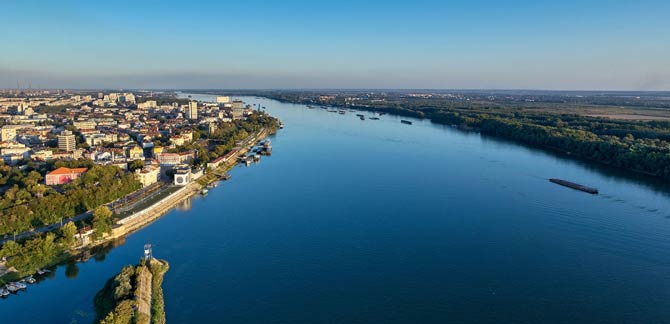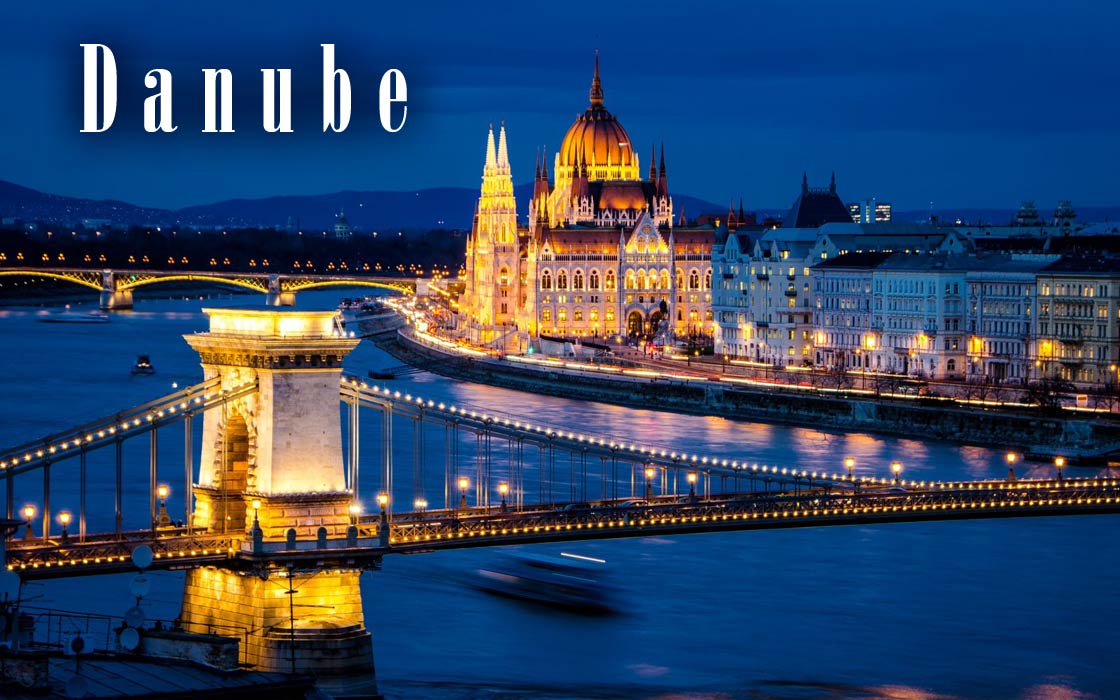Beautiful blue Danube
The Danube is the second-longest river in Europe (after the Volga). It served as a road for the transport of goods, whole tribes traveled on it, was and still is a state border, and also a source of energy. For thousands of years, it has been playing an important role in the economy, tourism and culture.
The Danube takes its name probably from the Proto-Indo-European word danu (dānu), which simply means a fluid, dewdrop or a river. The ancient Greeks called it Istros, meaning “strong river”. In Latin, it is referred to as Danubius or Danuvius, which meant the Roman god of rivers – the English name Danube comes from these words.
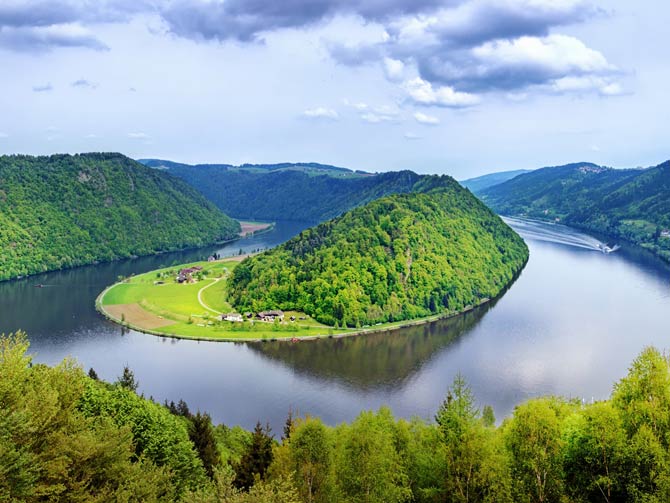
Danube geography
Traditionally, it is believed that the source of the Danube is a pond in the German city of Donaueschingen, where two streams connect: Brigach and Breg – it is located at an altitude of 1078 m above sea level. However, geographically the Danube starts at the source of Bregu. The upper course of the river ends at the Hainburg Gate on the Austrian-Slovak border, near the city of Passau. The middle section continues to the Iron Gate – a dam between the shores of Serbia and Romania, where the downstream begins. Approximately 2850 km from the source, the river flows into the Black Sea, creating a delta with three branches. Up to the Vienna level, the Danube has a character similar to a mountain river and then turns into a typical lowland river.
An interesting fact is that between Immendingen and Mohringen in Germany, the river partially soaks into the rocks and flows through underground caves, getting to a exsurgent 14 km away (reocrenical source, reocaine source). In dry months, water is even completely soaked in, leaving only a dry trough.
The Danube basin covers an area of 801,463 km2. It includes ten countries through which (or along their borders) it flows, as well as a number of others, including Poland (the Czarna Orawa river belongs to it). The Danube has many tributaries; the most important are the Tisza (the longest tributary), the Sava (with the highest water flow), as well as Prut, Olt (Aluta), Siret (Seret) and Inn – the latter from October to April carries even more water than the Danube itself at the point where the two rivers meet. Many of the tributaries are navigable. There are also many islands on the Danube.
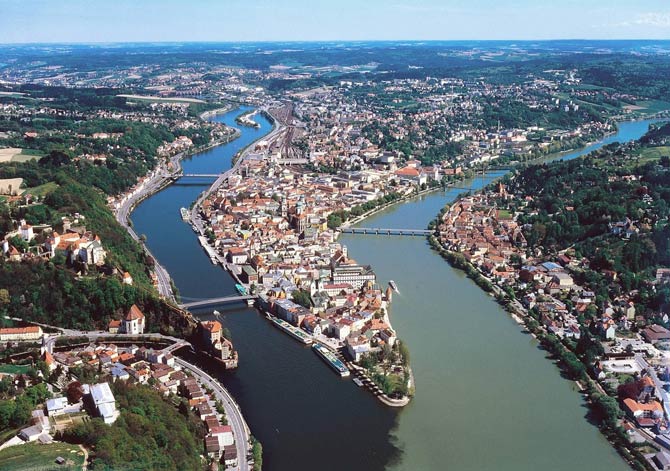
Danube states and cities
There are 10 European countries on the river – these are Germany, Austria, Slovakia, Hungary, Croatia, Serbia, Bulgaria, Romania, Moldova (in her case it is only 570 m of the river bank!) and Ukraine. Croatia, Bulgaria, Moldova and Ukraine have access only to one of the banks of the river, which in this case is their border. Hundreds of towns of all sizes and many large cities lie on the Danube. The most important are Ulm, Linz, Vienna, Bratislava, Budapest (the largest city on the Danube), Belgrade and Sulina – a city near which the Danube flows into the Black Sea.
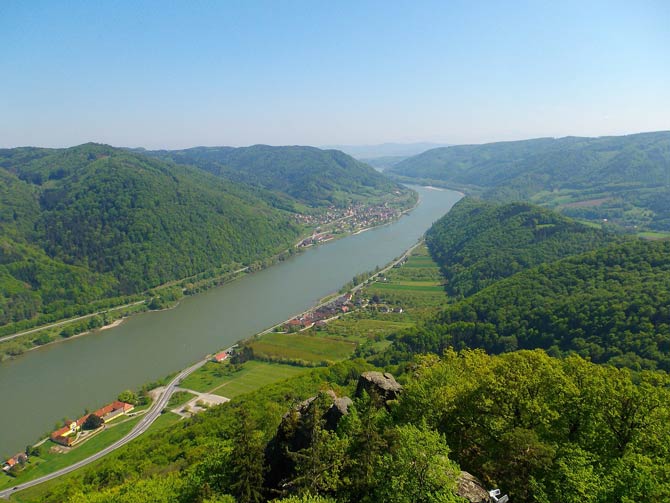
Danube nature
The Danube is one of the most varied rivers in Europe, considering how many countries and different types of landscape it traverses. To this day, the river is an important habitat for many animal species, despite the fact that its nature has been significantly changed by humans.
The Danube and its shores are home to many mammals, including marten, pine marten, badger, wildcat and beaver. The Danube Delta is home to European minks, otters, steppe polecats and ground squirrels. As for birds, the Danube has a dual function. First of all, about 300 species of these animals nest on its shores; in addition, there are dozens of those that winter here or travel here. The most valuable species in the Danube are the kingfisher, black stork, black kite, eagle owl and white-tailed eagle. There are many habitats of rare reptiles and amphibians on the Danube. The Aesculapian snake, the green lizard, the grass snake, the smooth snake and the Greek turtle are quite numerous here. There is also an endemic – the Danube newt.
The Danube is rich in fish, 180 species of which can be found here. These include chub, bream, carp, pike, barbel, zander, perch, catfish and gudgeon. There are also sturgeons here. Endemic species, including the Danube lamprey, also live in the Danube and its tributaries. It is also the only place, where the Balkan mud is found – a fish that was declared extinct in 1975. After its discovery in 1982, it was successfully multiplied and settled in many areas of the Danube and its tributaries.
The extremely diverse and rich ecosystems on the Danube have resulted in the creation of many national parks and nature reserves along the river. One of the most important is Kopacki Rit located in Croatia – it occupies intact swamps where as many as 260 species of birds nest. The Danube Riverside near the mouth of the Morava River into the Danube should also be considered interesting. However, the most important area is the Danube Delta, where the ranges of the fauna of Europe and Asia coincide. The Danube Delta is declared a UNESCO World Heritage Site – it is the largest cross-border protected area in Europe.
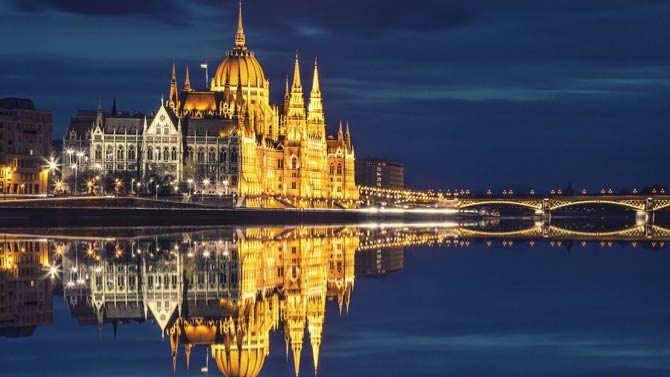
History of the Danube
The Danube was a river that played a very important role in shipping since ancient times. It is known that in the 7th century BC Greeks sailed it to the city of Tomis (near today’s Konstanz in Romania). In 29, the Romans reached the Danube. The river was the northern frontier of the Empire almost from its source to its mouth. At the same time, it was an important transport route for the army and a supply route for settlements located on the northern borders of the country. In 101, the Romans built the first ever bridge over the Danube.
After the fall of the Roman Empire, the Danube served mainly to peoples wandering around Europe, including the Magyars, who in the 9th century reached the territory of today’s Hungary and established their headquarters there. Two hundred years later, members of the first Crusade traveled down the river. In turn, in the 15th century, the Danube served the Turks. Their expansion along the Danube lasted until the Battle of Vienna. The Danube became the natural border between Eastern and Western civilization.

The Danube and the people
In 1812, the first steamboat entered the river, which gave rise to the intensive use of the Danube for navigation. Today it can be used for this purpose from the town of Ulm. From Kelheim city level (2,415 km from the mouth), the Danube becomes accessible to pusher barges. Hundreds of cruise ships sail on the Danube as well as many sailing and motorboats. Canoeing trips are organized on non-navigable sections.
As a source of drinking water, the Danube is mainly used in Germany. Austria and Hungary are departing from this due to significant water pollution. It is only in the downstream section that the Danube becomes clean enough to be used as a source of drinking water.
The countries through whose territory the Danube flows use it as a source of electricity, building hydroelectric power plants. This is done by Germany, Austria, Slovakia, Serbia and Romania. Countries lying on only one riverbank tend to give up building a power plant because of difficulties in communicating with a country on the other. The only power plant built in international cooperation is the Iron Gate, which was constructed by Yugoslavia and Romania. Today, this power plant is one of the most important sources of electricity in Romania and Serbia.
The Danube does not play much of a role in fisheries at present. Apart from sport fishing, fish are actually only caught in the Danube Delta – even 4.4 thousand. tons of fish per year. The river, on the other hand, plays a huge role in viticulture. Hungary’s extensive vineyards and the Austrian Wachau Valley are situated on the Danube river.
The Danube also plays an important role in the culture of the countries it flows through. However, most of the music, books and paintings devoted to it, is little known outside Europe. The exception is, of course, the famous waltz by Johann Strauss On the beautiful blue Danube.

Danube – threats
As a river important for inland navigation, the Danube has been the subject of much human interference. In 1890, rock steps were blown up on the border of today’s Serbia and Romania to facilitate navigation. As many rivers flow into the Danube, and their condition changes rapidly with rainfall, much effort has been made to strengthen the banks and regulate them. Today, only half the length of the Danube banks is natural. Due to the liquidation of former floodplains (only 20% of them still exist today), floods are frequent.
The big problem is the increasing pollution of the Danube and the fact that many dams and weirs have been built in Germany and Austria (in Austria the Danube is a source of electricity so important that the term “hydropower monoculture” was coined there). All this makes the protection of the Danube nature extremely difficult, as it is in contradiction with the possibility of economic use of the river. A good example of this is the opening of the Iron Gate power plant in 1964. It dammed up the water, creating a reservoir 150 km long. It required the displacement of 17,000 people. Since the dam was built, sturgeons cannot swim upstream for spawning.
The Danube is often the subject of disputes over the use of the river. For example, Slovakia tried to build a dam on the Danube, which was met with vehement opposition from Hungary, who argued that its construction would jeopardize Budapest’s water supply. Currently, a similar subject of the dispute is the canal built by Ukraine, which caused the water table in the Danube Delta to be lowered. Despite Romanian protests, the Ukrainian government claims that the canal is entirely within its territory, so its construction did not have to be agreed with anyone.
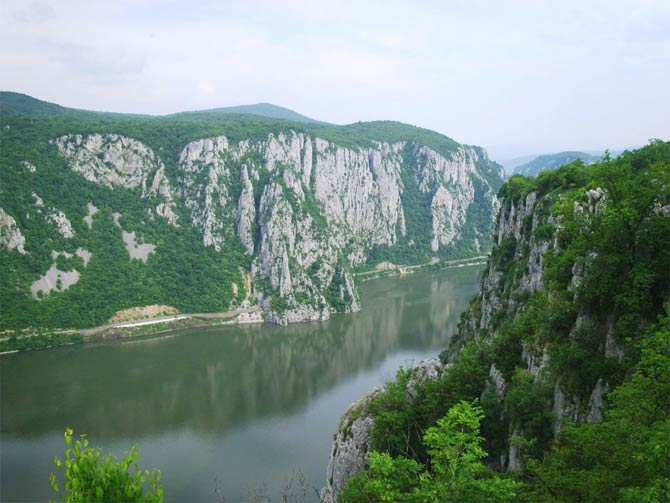
Detailed data / dimensions
Danube (Danubius, Donau, Duna, Dunav, Дунав, Dunărea, Дунай)
- Length: 2,850 km
- River basin area: 801,463 km2 (309,447 sq mi)
- Average flow:
- 580 m3/s (Passau)
- 1900 m3/s (Vienna)
- 2,350 m3/s (Budapest)
- 5600 m3/s (Belgrade)
- 7,000 m3/s (just before the delta)

Danube – interesting facts
- The Danube is the only large river in Europe that flows from west to east.
- The length of the Danube’s waterway counts growingly from the estuary to source – unlike other navigable rivers.
- Some countries, such as Austria, have a river war fleet on the Danube. On a daily basis, ships mainly perform rescue and hydrographic tasks.
- Navigation on the Danube is possible for ships of any country, except for foreign warships.
